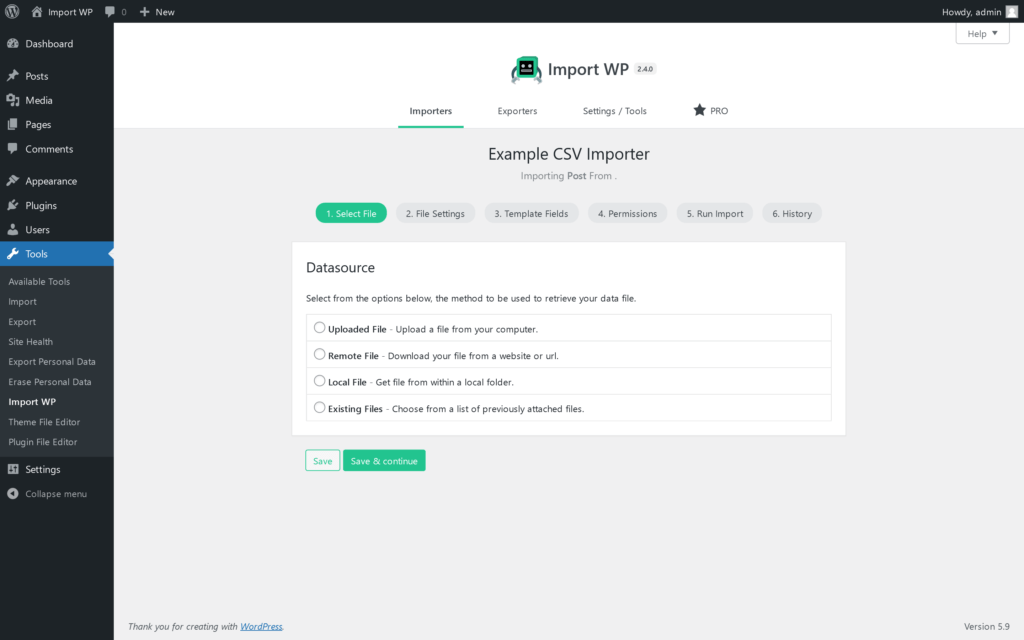Selecting a file to import
Table of Contents
ImportWP allows you to import files from your computer, a remote url, a location on your websites server, or from a list of previously uploaded files attached to the current importer all from the Select File tab on the importer screen.

To choose the datasource for your importer, use the radio buttons next to each option, this will expand your selection with any extra fields.
Importing an uploaded File

The upload file option allows you to upload an XML or CSV file to be imported from your computer, simply click on the choose file input field, and your browser should display a file selector window, once you have selected the appropriate file click on Save & Continue to upload the file and be taken to the next step.
Importing from Remote file

The remote file option allows you to download an XML or CSV file from a remote url such as a data feed or from an FTP server, enter the Url to your remote file in the field labelled Remote Url, include the protocol such as http:// or https://. Next select the type of file you are importing via the File Type dropdown.
Using a FTP Connection String
To download from a FTP server using the Remote File option, you can use an FTP connection url
ftp://username:password@host:port/path/to/file.csvFor example if you wanted to connect to an ftp server on the host “example.com” and download the file “datafeed/latest.xml” using the username “sneaky”, password “peaky” and default port of “21”.
Please note since this is a url, the username and password should be urlencoded.
ftp://sneaky:peaky@example.com/datafeed/latest.xmlOnce you have completed the remote url fields, click on Save & Continue to upload the file and be taken to the next step.
Importing from your Local filesystem

The Local file option allows you to select a file location that already exists on your Websites server, enter the full path to the file you wish to import, then select the type of file you are importing via the File Type dropdown.
Once you have completed the local file fields, click on Save & Continue to upload the file and be taken to the next step.
Import using an Existing File

If you have previously selected and used a datasource on your current importer, you should see a list of existing files displayed, click on the radio button next to the correct file you wish to import.
Once you have selected an existing file, click on Save & Continue to upload the file and be taken to the next step.